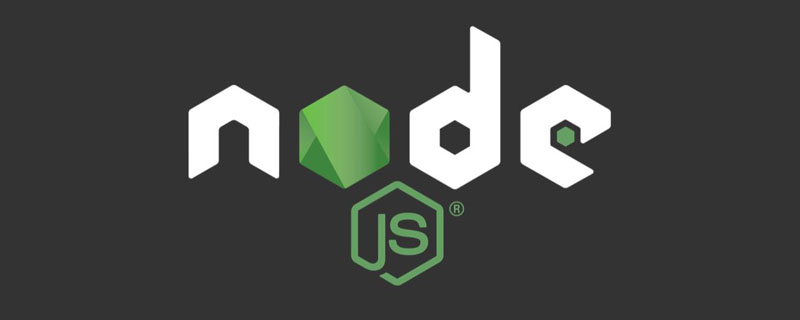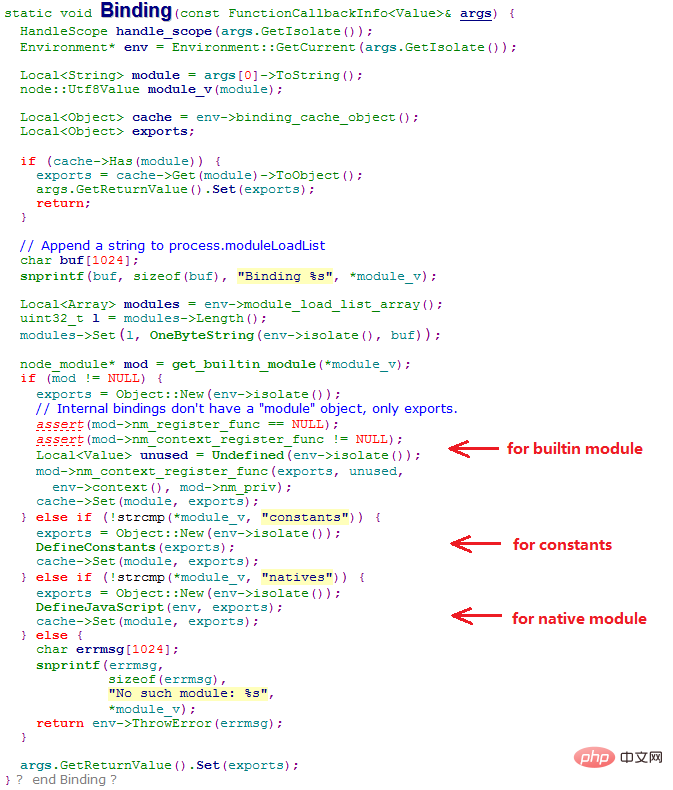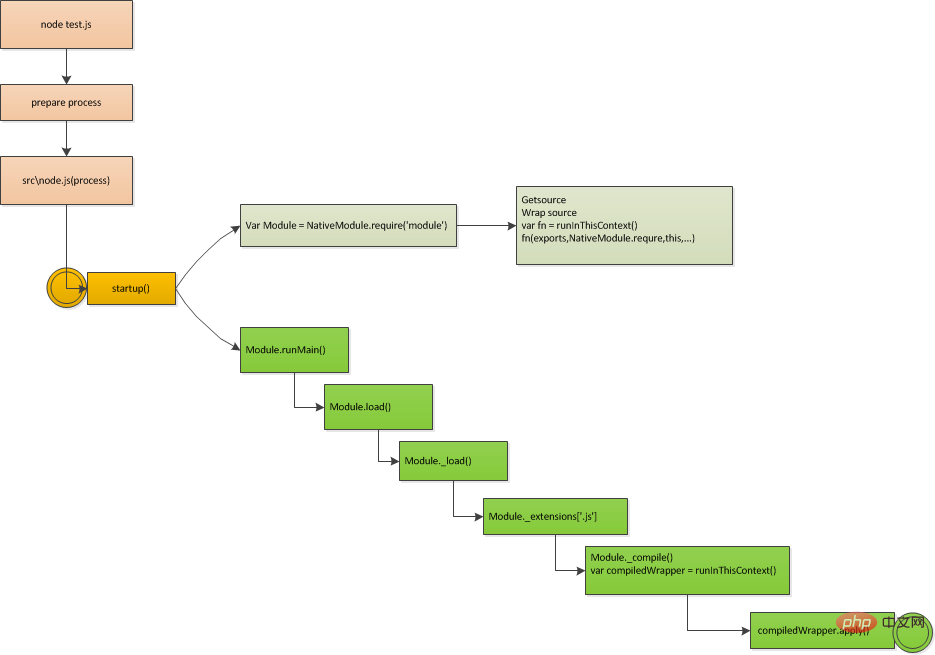
This article will introduce to you the module loading in nodejs. It has certain reference value. Friends in need can refer to it. I hope it will be helpful to everyone.

Related recommendations: "nodejs Tutorial"
When using Nodejs, it is inevitable to refer to third-party modules. Some are built into Nodejs (for example: http, net...), and some are published on npm (for example: mssql, elasticsearch...)
This article focuses on 3 Question:
#1. Nodejs module loading process.
#2. Application startup process.
#3. How does the application load dependent modules.
1. Module loading process
##Nodejs modules can be roughly divided into 4 types:
a) builtin module Module provided in C form in Nodejs.
b) constant module Module that defines constants in Nodejs.
c) native module Module provided in javascript form in Nodejs.
d) Third-party module Modules provided by third parties.
Let’s first look at the generation process of builtin module and native module.

builtin C module The generation process is relatively simple. Each builtin C module entry will be expanded into a func through the macro NODE_MODULE_CONTEXT_AWARE_BUILTIN, such as the tcp_wrap module For example, it will be expanded into a static void register_tcp_wrap() attribute(constructor) function.
Friends who are familiar with GCC know that the function modified by attribute (constructor) will be executed before the main() function of Nodejs. In other words, the builtin C module will be loaded before the main() function. modlist_builtin list, and modlist_builtin is a pointer of type struct node_module, get_builtin_module() will traverse to find the module we need. In fact, whether it is a naive JS module or a builtin C module, it will eventually be compiled into an executable file. The extraction methods of the two are quite different. The js module uses process.binding('natives'), while the C module uses get_builtin_module() directly. A binding() function is provided in node.cc. When we use require() to reference another module, the binding() function will be introduced. Let's analyze this function:
builtin has the highest priority, and will be searched in modlist_builtin. The process is very simple, just traverse the entire list and look for modules with the same name. After being found, the module's registration function will be executed first, and then the data exports will be returned.
constants module has the second priority, and constant definitions in Nodejs are exported through constants.
native has the lowest priority.
2. Application startup process

# #The above picture is a flow chart, which describes how test.js is started as a parameter and finally executed. The whole process can be divided into 4 steps:
1. Executable file node: node entry, which mainly plays the role of environment preparation during the startup process
2.src/node.js: startup script
3.Native Module: Prepare for the execution of module.js
4.module.js: native module, used to load, compile, and execute applications
How does the application load dependent modules As mentioned earlier, NativeModule.require() is only responsible for helping to reference natives modules, which is enough for lib/module.js. But it is obvious that general applications need to reference not only the matatives module, but also third-party modules. Let us take a look at the Module.prototype._require() function in module.js. For more programming-related knowledge, please visit: Programming Teaching! ! 
The above is the detailed content of Understanding module loading in Nodejs. For more information, please follow other related articles on the PHP Chinese website!